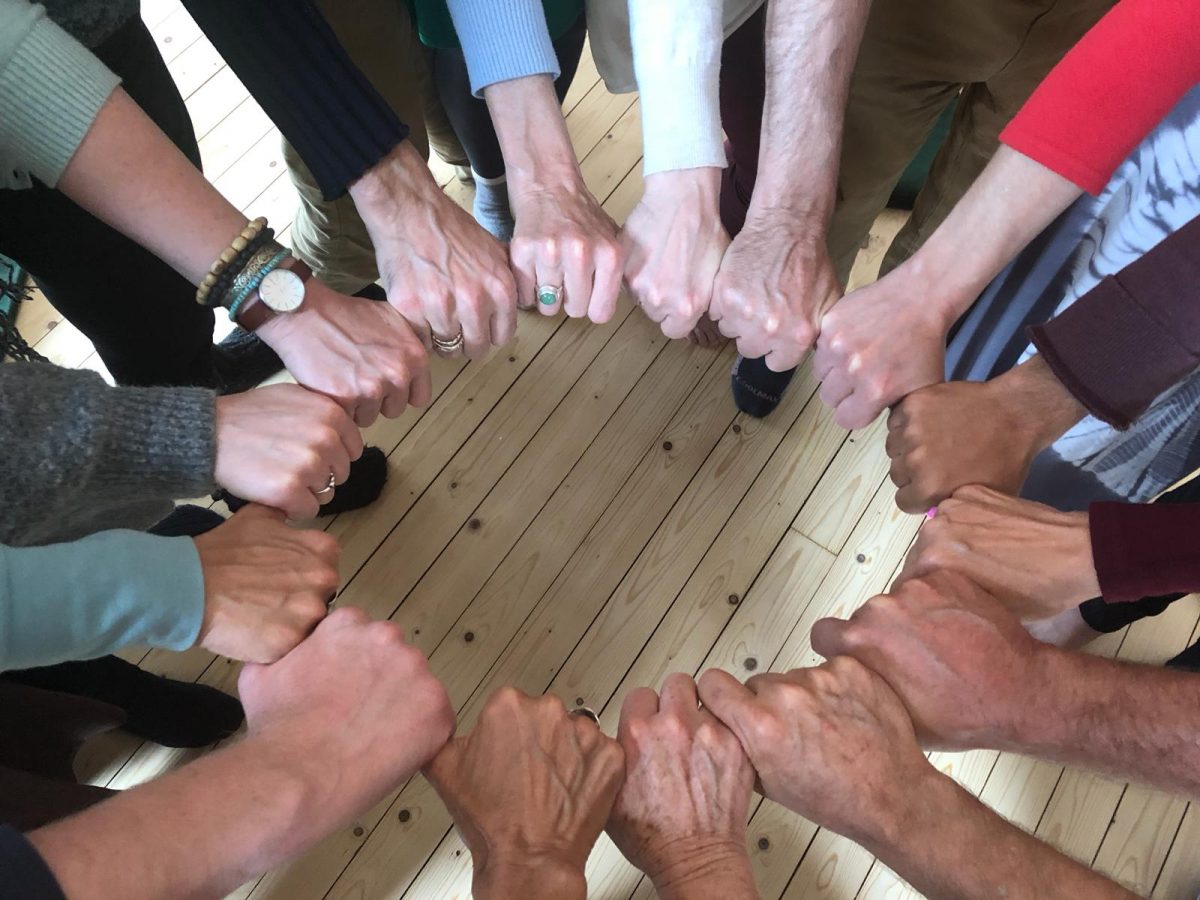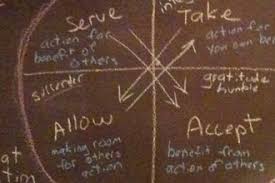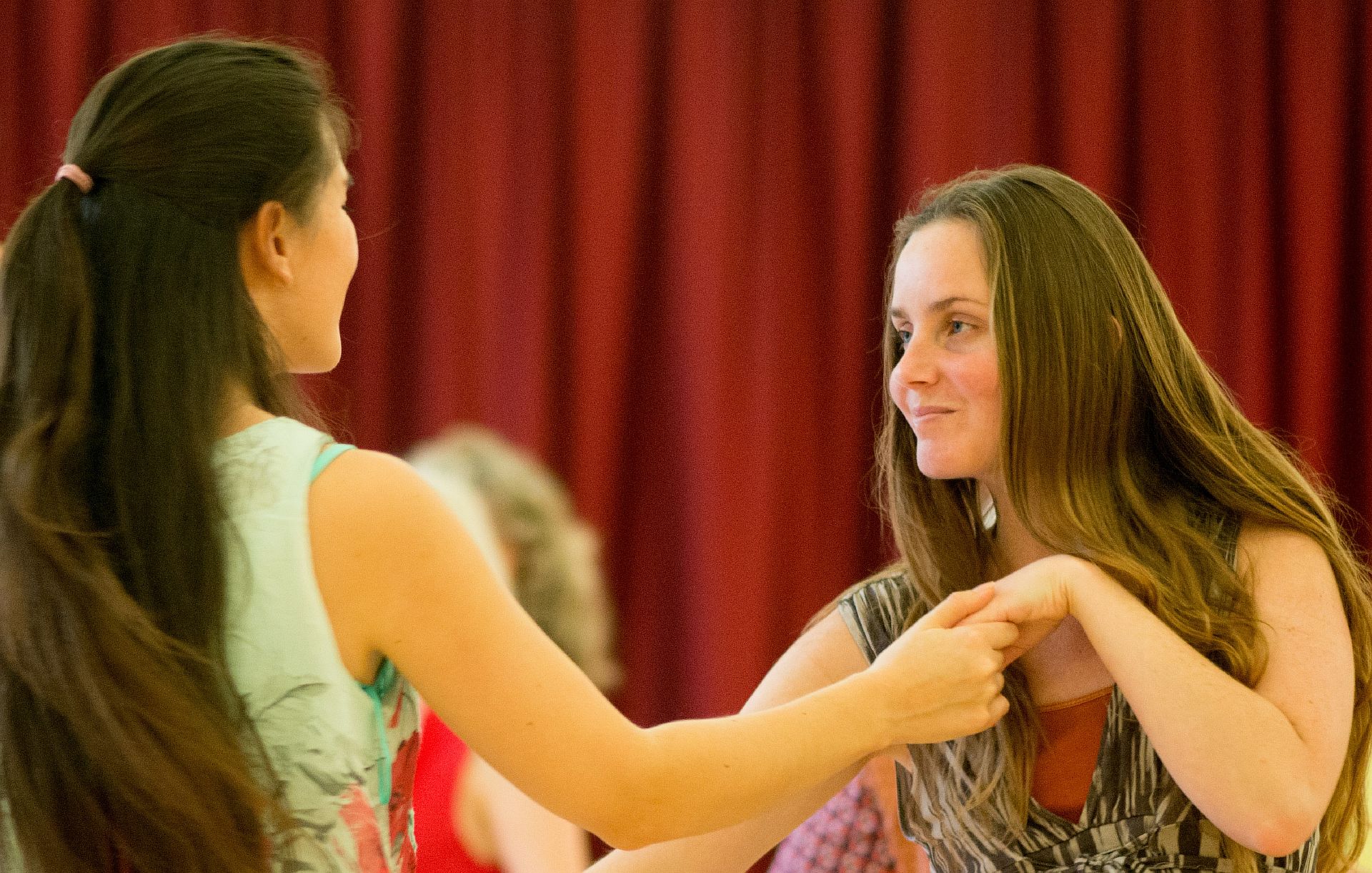Stephen Porges Polyvagal theory (1994) has been a huge addition to the understanding of the human nervous system, and how stress and trauma affects most people to some degree. "Polyvagal theory - trauma verses connection" is a brief summary of the workings of the nervous system, how trauma happens, and how social connection and engagement supports "regulation"; moving from stress to wellbeing.
Prior to the Polyvagal theory it was understood that there were two main components to the autonomic nervous system, the parasympathetic - calming/regulating and the sympathetic - active/initiating and these two worked in opposition to each other.
Porges however describes a more complex three part model which include not one, but two major functions to the vagus nerve
- social engagement and connection: (ventral vagus)
- fight/flight; mobilisation: sympathetic (this is not the vagus nerve)
- freeze/shock; immobilisation parasympathetic: (dorsal vagas)
Our nervous system is constantly looking for signs of danger and of safety in our environment. Porges coined the term "neuroception" our innate ability to sense signs in our environment, through the nervous system, before we have time to consciously recognise them. The nervous system is hierarchical in how the three aspects function. When we feel safe, relaxed and able to relate to our environment we are operating in the social engagement aspect of the nervous system. If we start to sense some danger we become mobilised into fight or flight to either get away from or confront the danger. The last resort of the nervous system is freeze; this happens when there is no other option, and when we are overwhelmed, such as shock. This part of the nervous system is the oldest in evolutionary terms, think of reptiles and "playing dead".
"Vagus" means wanderer, "poly" means many. The vagus nerve travels through the body from the face through the heart and many of the internal organs, such as the stomach and the gut. It is only recently that more understanding and research is going into the impact of stress and trauma on gut health, and also how the gut communicates back to the brain. This all happen via the vagus nerve. It is also interesting from an acupuncture perspective, as we recognise facial signs (colour, lines, complexion) as diagnostic of symptoms which occur in the body and organs. The Polyvagal theory now put the science behind this ancient understanding.
Porges addition of the social engagement system as part of the nervous system sheds incredibly useful light on how fundamental social connection is for not only regulating, but helping to heal trauma held in the nervous system.
Every individual experiences some degree of trauma in our childhood and life. Unresolved trauma can get trapped in the body, and we literally become more attuned to danger. For example the anatomy of the inner ear changes and we can perceive high pitched sounds (such as a person screaming) or low pitched sounds (such as an animal growling). However if we remain in this state we are unable to hear the melodic intonations of the human voice. Likewise the capacity of our vision changes in trauma and we perceive human faces as dangerous and are less able to translate the facial signs of friendliness and safety. We are only able to perceive these subtleties when we feel safe enough, and this literally changes how we sense the world we live in. It's important to be able to regulate our nervous system, otherwise we live in a constant state of sympathetic activation, commonly known as stress.
There are ways to "hack" the autonomic nervous system, the most powerful way is through the breath
- In breath - activating (sympathetic nervous system) - focus on if you feel tired and want energising
- Out breath - relaxing (parasympathetic nervous system) - focus on if you feel anxious and want calm
So if you want to calm anxiety do not "just breath" more! Focussing on a longer exhale will be more regulating bringing a calming affect.
Co-regulation is how we support each other to feel safe at the level of the nervous system. The social engagement aspect of the Polyvagal theory explains how through facial expression, particularly around the eyes, and vocal prosody; intonation, we can create more safety via the human senses. The Polyvagal theory makes sense of how and why we need each other as social creatures.
Trauma happens, but we can repair. In studies done with young children, it has been shown that it's the ability to repair that is paramount, not that disconnection happened. The learning of how to come back into social connection after disconnection is actually strengthening and brings dexterity to the nervous system and person.
"It is through reciprocal regulation of our autonomic states that we feel safe to move into connection and create trusting relationships." Deb Dana - The Polyvagal theory in therapy.
Polyvagal theory has given therapists and individuals a map of how to consciously work with the nervous system. It highlights how we not only need each other as social creatures, but we can behave in ways which either help or hinder wellbeing. Vulnerability, asking for help when needed and human compassion all take on a greater meaning when understood in the context of the social engagement system and its use in the regulation of the nervous system.
Individuals can gain more awareness and control of these mechanisms, within themselves to move from stress to wellbeing. For practitioners the information is priceless, such as understanding the impact of vocal tone, facial expression, touch and human kindness as tools of therapeutic value.
How are you feeling right now? How do you want to show-up in the world? Together we can create sanity, empathy and a more humane world in which to live.
https://www.youtube.com/watch?v=8AnHlx3qZ30





